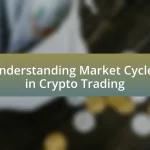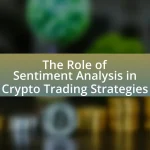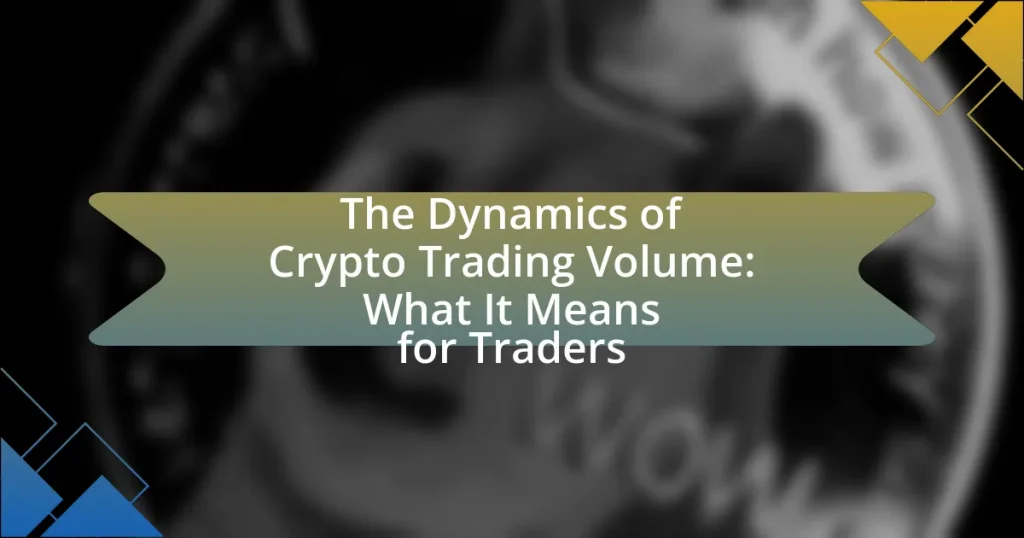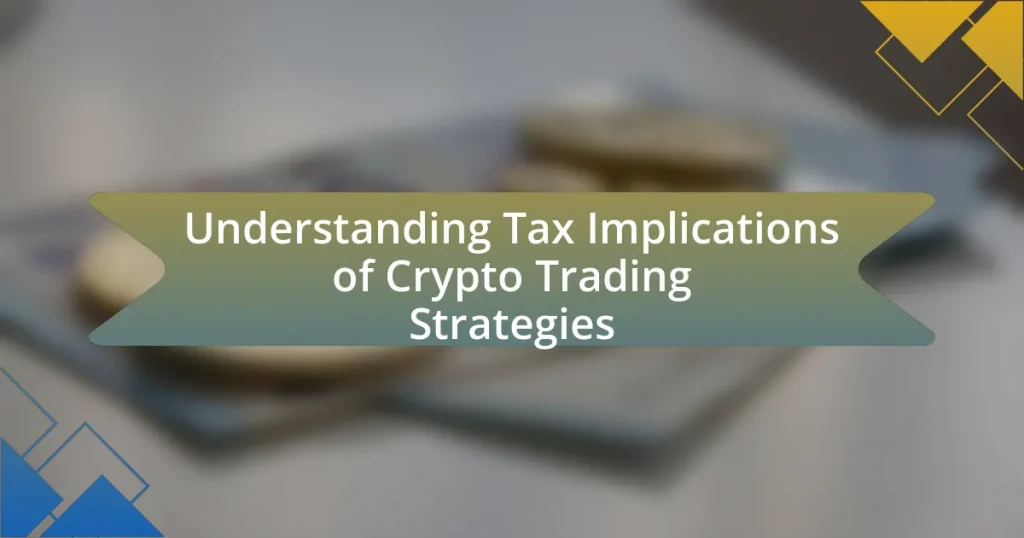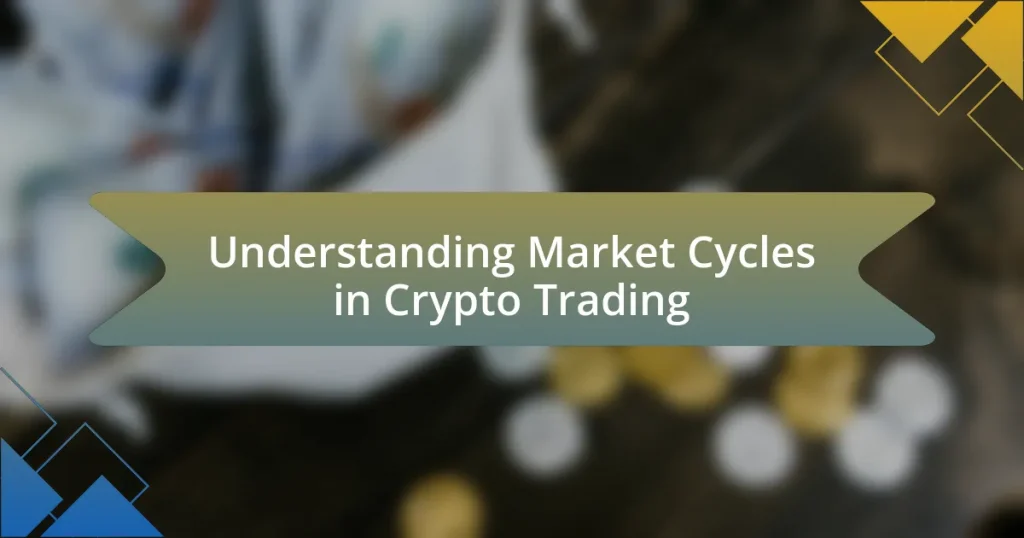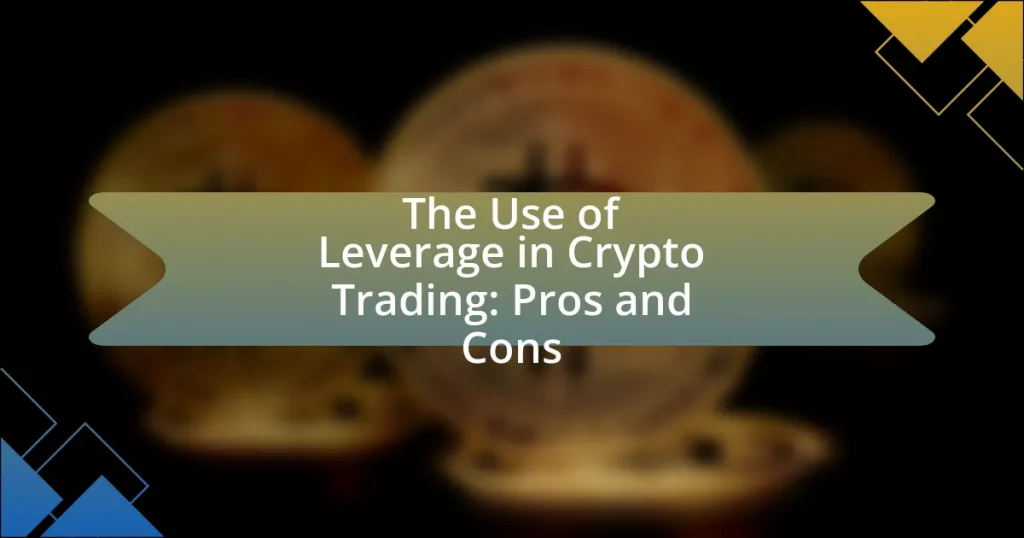The article focuses on the dynamics of crypto trading volume, which encompasses the fluctuations and trends in cryptocurrency trading activity influenced by factors such as market sentiment, regulatory news, and technological developments. It explains how trading volume is measured, the metrics used to assess it, and the importance of volume in determining market liquidity and price movements. Additionally, the article discusses how traders can utilize trading volume to inform their strategies, the implications of low and high trading volumes, and the tools available for monitoring volume trends. Understanding these dynamics is crucial for traders to make informed decisions and effectively navigate the cryptocurrency market.
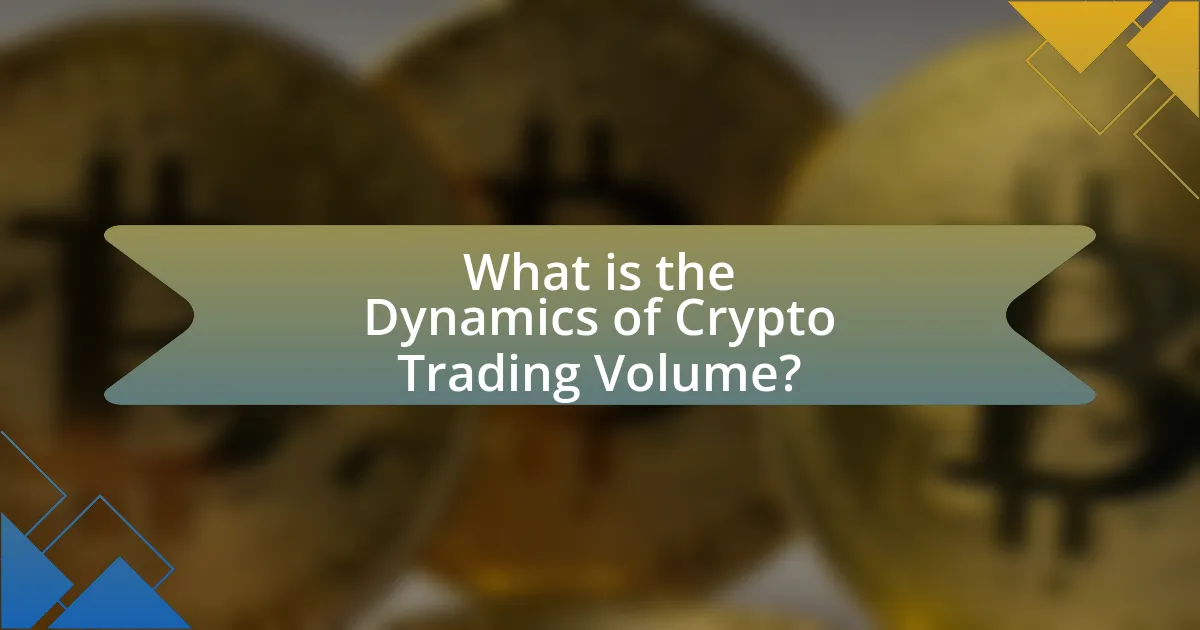
What is the Dynamics of Crypto Trading Volume?
The dynamics of crypto trading volume refer to the fluctuations and trends in the amount of cryptocurrency traded over a specific period. These dynamics are influenced by various factors, including market sentiment, regulatory news, technological developments, and macroeconomic trends. For instance, during periods of high volatility or significant news events, trading volumes often spike as traders react to price movements. According to data from CoinMarketCap, trading volumes can vary dramatically, with daily volumes reaching over $100 billion during market surges, indicating heightened trader activity and interest. Understanding these dynamics helps traders make informed decisions based on market behavior and potential price movements.
How is crypto trading volume measured?
Crypto trading volume is measured by the total amount of a cryptocurrency that is traded within a specific time frame, typically expressed in units or monetary value. This measurement includes all buy and sell transactions across various exchanges, providing a comprehensive view of market activity. For example, if 1,000 Bitcoin are traded in a 24-hour period, the trading volume for that period is 1,000 Bitcoin. This metric is crucial for traders as it indicates market liquidity and can influence price movements; higher trading volumes often correlate with increased interest and volatility in the market.
What metrics are used to assess trading volume?
The primary metrics used to assess trading volume include total volume, average daily volume, and volume by exchange. Total volume measures the total number of assets traded over a specific period, providing insight into market activity. Average daily volume calculates the average number of assets traded each day, helping to identify trends over time. Volume by exchange breaks down trading activity across different platforms, allowing traders to gauge liquidity and market sentiment. These metrics are essential for understanding market dynamics and making informed trading decisions.
How do exchanges report trading volume?
Exchanges report trading volume by aggregating the total number of shares or contracts traded within a specific period, typically on a daily basis. This data is collected from all executed trades on the exchange, including both buy and sell orders, and is often displayed in real-time on the exchange’s platform. For instance, the reported trading volume can include spot trading, futures contracts, and other financial instruments, providing a comprehensive view of market activity. Accurate reporting is crucial as it reflects market liquidity and helps traders make informed decisions; for example, higher trading volumes often indicate greater interest and activity in a particular asset.
Why is trading volume important in crypto markets?
Trading volume is important in crypto markets because it indicates the level of activity and liquidity for a particular asset. High trading volume suggests strong investor interest and can lead to more stable price movements, while low volume may result in increased volatility and difficulty in executing trades. For instance, during significant market events, assets with higher trading volumes tend to experience less drastic price fluctuations compared to those with lower volumes, as evidenced by the Bitcoin trading volume surge during the 2020 bull run, which correlated with price stability and upward momentum.
What role does trading volume play in price movements?
Trading volume significantly influences price movements in financial markets, including cryptocurrencies. High trading volume often indicates strong investor interest and can lead to increased price volatility, as more transactions create greater price fluctuations. Conversely, low trading volume may suggest a lack of interest, resulting in less price movement and potentially leading to price stagnation. Historical data shows that during periods of high trading volume, such as the 2017 Bitcoin surge, prices experienced rapid increases, while low volume periods often correlated with price declines or stability. Thus, monitoring trading volume is essential for traders to gauge market sentiment and potential price trends.
How does trading volume indicate market sentiment?
Trading volume indicates market sentiment by reflecting the level of activity and interest in a particular asset. High trading volume often signifies strong investor confidence and bullish sentiment, as more participants are willing to buy or sell, suggesting a consensus on the asset’s value. Conversely, low trading volume can indicate uncertainty or bearish sentiment, as fewer traders are engaged, which may suggest a lack of confidence in the asset’s future performance. Historical data supports this, as seen during significant market events; for instance, during the 2017 Bitcoin surge, trading volume increased dramatically, correlating with heightened investor enthusiasm and price appreciation.
What factors influence crypto trading volume?
Crypto trading volume is influenced by several key factors, including market sentiment, regulatory news, technological developments, and macroeconomic trends. Market sentiment, driven by investor emotions and news, can lead to increased buying or selling activity, significantly impacting trading volume. Regulatory news, such as government policies or legal frameworks regarding cryptocurrencies, can either boost confidence and trading activity or create uncertainty, leading to decreased volume. Technological developments, including advancements in blockchain technology or the introduction of new trading platforms, can enhance accessibility and attract more traders, thereby increasing volume. Lastly, macroeconomic trends, such as inflation rates or changes in traditional financial markets, can affect investor behavior and influence the volume of crypto trading as traders seek alternative investment opportunities.
How do market events affect trading volume?
Market events significantly influence trading volume by triggering increased activity among traders. For instance, announcements such as regulatory changes, technological advancements, or major partnerships can lead to heightened interest and participation in the market. Historical data shows that during significant events, like the Bitcoin halving in 2020, trading volume surged by over 200% as traders reacted to potential price changes. Additionally, market sentiment shifts caused by news events can lead to rapid buying or selling, further amplifying trading volume. Thus, the correlation between market events and trading volume is evident, as traders respond to new information and adjust their strategies accordingly.
What impact do regulatory changes have on trading volume?
Regulatory changes significantly impact trading volume by either increasing or decreasing market activity. For instance, when regulations become more stringent, such as the implementation of stricter compliance requirements, trading volume often declines as traders may exit the market due to increased costs and risks. Conversely, when regulations are relaxed or clarified, trading volume can increase as market participants gain confidence and feel more secure in their trading activities. Historical data from the introduction of the European Union’s MiFID II regulation in 2018 showed a notable decrease in trading volume across various asset classes, illustrating how regulatory changes can directly affect market dynamics.

How do Traders Utilize Crypto Trading Volume?
Traders utilize crypto trading volume to assess market activity and liquidity, which informs their trading strategies. High trading volume often indicates strong interest in a cryptocurrency, suggesting potential price movements, while low volume may signal a lack of interest or uncertainty. For instance, traders often look for volume spikes as confirmation of price trends; a price increase accompanied by high volume typically indicates a strong bullish sentiment. Conversely, a price drop with high volume can suggest bearish pressure. According to a study by the University of California, Berkeley, trading volume is a reliable predictor of future price movements, reinforcing its importance in traders’ decision-making processes.
What strategies can traders employ based on trading volume?
Traders can employ several strategies based on trading volume, including volume-based trend confirmation, volume spikes for breakout identification, and volume analysis for reversals. Volume-based trend confirmation involves using increasing volume to validate the strength of a price trend; for instance, a rising price accompanied by high volume suggests strong buying interest, indicating a likely continuation of the trend.
Volume spikes can signal potential breakouts; when a cryptocurrency experiences a sudden surge in volume, it often precedes significant price movements, allowing traders to enter positions before the price shifts. Additionally, analyzing volume can help identify reversals; for example, if a price decline is accompanied by decreasing volume, it may indicate weakening selling pressure, suggesting a potential reversal point.
These strategies are supported by historical data showing that price movements often correlate with volume changes, reinforcing the importance of volume in trading decisions.
How can volume analysis enhance trading decisions?
Volume analysis enhances trading decisions by providing insights into market strength and potential price movements. High trading volume often indicates strong investor interest and can confirm the validity of price trends, while low volume may suggest a lack of conviction in price movements. For instance, a price increase accompanied by high volume signals a robust upward trend, whereas a price increase with low volume may indicate a potential reversal. Historical data shows that significant price changes often correlate with volume spikes, reinforcing the importance of volume as a key indicator in trading strategies.
What are the risks of ignoring trading volume?
Ignoring trading volume poses significant risks, including the potential for misinterpreting market trends and making uninformed trading decisions. Trading volume indicates the level of interest and liquidity in a particular asset; low volume can signal a lack of investor confidence, leading to increased volatility and price manipulation. For instance, a cryptocurrency with high price movements but low trading volume may not reflect genuine market sentiment, resulting in false signals for traders. Additionally, neglecting volume can lead to missed opportunities for entering or exiting positions effectively, as high volume often correlates with stronger price movements and trends. Therefore, traders who overlook trading volume may face increased exposure to losses and diminished trading performance.
How does trading volume correlate with volatility?
Trading volume positively correlates with volatility, meaning that higher trading volumes often lead to increased price fluctuations. This relationship is evident in financial markets, where significant trading activity can amplify price movements due to the heightened interest and participation from traders. For instance, during periods of high trading volume, such as market news releases or major events, the likelihood of sharp price changes increases, as seen in historical data from cryptocurrency exchanges where spikes in volume frequently coincide with substantial price volatility.
What patterns can traders identify through volume analysis?
Traders can identify several key patterns through volume analysis, including accumulation, distribution, and breakout patterns. Accumulation occurs when volume increases while prices stabilize, indicating that buyers are entering the market, often preceding a price increase. Distribution is characterized by high volume during price peaks, suggesting that sellers are offloading assets, typically before a price decline. Breakout patterns emerge when volume spikes as the price moves beyond established support or resistance levels, signaling potential continuation of the trend. These patterns are validated by historical trading data, where significant volume changes often correlate with price movements, reinforcing the reliability of volume analysis in predicting market behavior.
How can traders use volume to predict price reversals?
Traders can use volume to predict price reversals by analyzing changes in trading volume alongside price movements. When a price trend is accompanied by increasing volume, it indicates strong conviction in that trend; conversely, a price movement with declining volume suggests weakening momentum, often signaling a potential reversal. For instance, if a cryptocurrency is in a downtrend and suddenly experiences a spike in volume while the price begins to rise, this could indicate a reversal as buyers are entering the market. Historical data supports this, as studies have shown that significant volume changes often precede price reversals, making volume analysis a critical tool for traders in identifying potential market shifts.
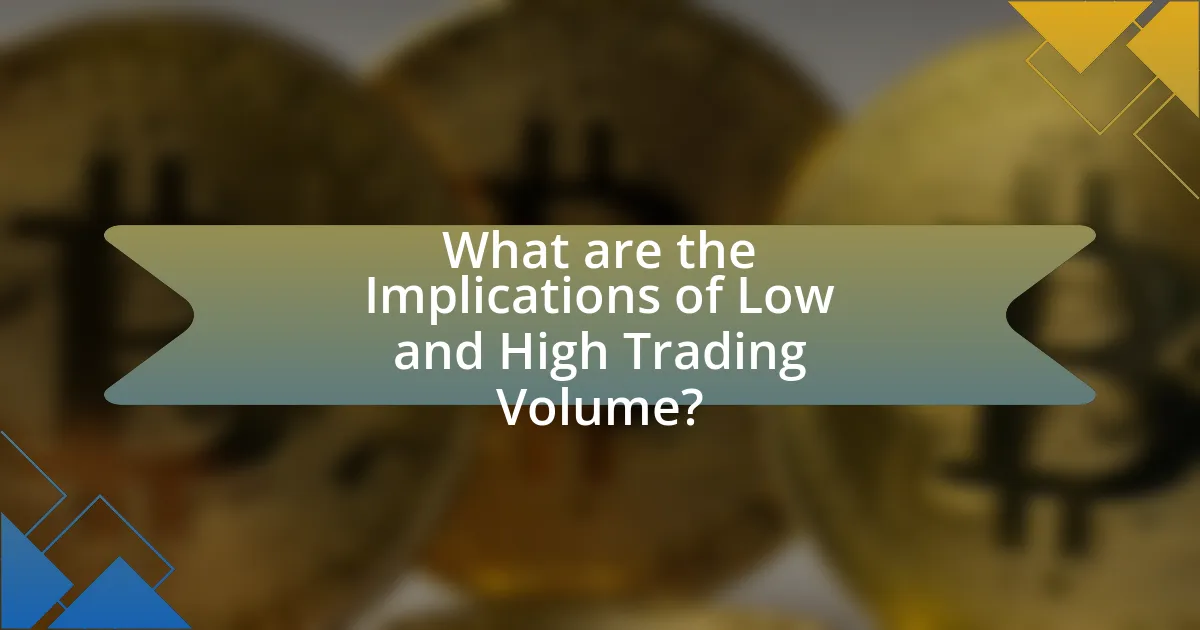
What are the Implications of Low and High Trading Volume?
Low trading volume often indicates a lack of interest or participation in a market, which can lead to increased volatility and difficulty in executing trades at desired prices. Conversely, high trading volume signifies strong market interest and liquidity, allowing for smoother transactions and more stable price movements. For instance, during periods of high trading volume, the price of Bitcoin can remain more stable, as evidenced by its trading patterns during significant market events, where volume spikes correlate with less price fluctuation. Thus, understanding trading volume is crucial for traders to gauge market sentiment and make informed decisions.
What does low trading volume indicate for traders?
Low trading volume indicates a lack of market interest and liquidity for traders. When trading volume is low, it often suggests that fewer participants are buying or selling an asset, which can lead to increased price volatility and difficulty in executing trades at desired prices. Historical data shows that assets with low trading volume can experience significant price swings, as even small trades can disproportionately affect the market price. This lack of liquidity can deter traders from entering positions, as the risk of slippage and unfavorable price movements increases.
How can low volume affect liquidity and price stability?
Low trading volume negatively impacts liquidity and price stability by creating a market environment where fewer transactions occur, leading to wider bid-ask spreads. When trading volume is low, it becomes more challenging for traders to buy or sell assets without causing significant price fluctuations. For instance, in a low-volume market, a single large order can disproportionately affect the asset’s price, resulting in increased volatility. Historical data from various financial markets indicates that periods of low trading volume often correlate with heightened price swings, as seen during off-peak trading hours or in less popular cryptocurrencies. This relationship underscores the importance of sufficient trading volume for maintaining a stable and liquid market.
What strategies should traders adopt in low volume conditions?
Traders should adopt strategies such as focusing on limit orders, utilizing technical analysis, and being cautious with position sizing in low volume conditions. Limit orders help traders avoid slippage, which is more pronounced in low volume markets, ensuring better execution prices. Technical analysis becomes crucial as price movements may be exaggerated due to fewer participants, allowing traders to identify key support and resistance levels. Additionally, cautious position sizing mitigates risk, as low volume can lead to increased volatility and unpredictable price swings. These strategies are validated by historical trading patterns, which show that low volume often correlates with higher price volatility, making careful planning essential for successful trading.
What opportunities arise from high trading volume?
High trading volume presents opportunities for increased liquidity, enabling traders to enter and exit positions more easily. This heightened liquidity often leads to tighter bid-ask spreads, reducing transaction costs for traders. Additionally, high trading volume can signal strong market interest and momentum, allowing traders to capitalize on price movements more effectively. Historical data shows that assets with higher trading volumes tend to experience less volatility, providing a more stable trading environment. For instance, during significant market events, cryptocurrencies like Bitcoin have demonstrated that increased trading volume correlates with rapid price adjustments, offering traders the chance to profit from swift market reactions.
How can traders capitalize on high volume spikes?
Traders can capitalize on high volume spikes by executing trades during these periods to leverage increased market activity and potential price movements. High volume often indicates strong interest in a particular asset, which can lead to significant price changes. For instance, when Bitcoin experienced a volume spike of over 200% in December 2017, many traders profited by entering positions just before the price surged. This strategy relies on the understanding that high volume can signal the start of a trend, allowing traders to buy low and sell high effectively.
What are the potential pitfalls of trading during high volume periods?
Trading during high volume periods can lead to increased volatility and slippage, which can negatively impact trade execution. High trading volumes often coincide with rapid price movements, making it difficult for traders to enter or exit positions at desired prices. For instance, during significant market events, such as regulatory announcements or major news releases, the price can fluctuate dramatically within short time frames, resulting in traders experiencing unexpected losses. Additionally, high volume can attract algorithmic trading strategies that may exacerbate price swings, further complicating the trading environment. This phenomenon is supported by studies showing that increased trading activity correlates with heightened market volatility, underscoring the risks associated with trading in such conditions.
What best practices should traders follow regarding trading volume?
Traders should prioritize analyzing trading volume trends to make informed decisions. Monitoring volume helps identify market strength; for instance, a price increase accompanied by high volume indicates strong buying interest, while a price rise with low volume may suggest a lack of conviction. Additionally, traders should use volume indicators, such as the On-Balance Volume (OBV) or Volume Moving Average, to confirm price movements and potential reversals. Historical data shows that significant price movements often correlate with spikes in trading volume, reinforcing the importance of volume analysis in trading strategies.
How can traders effectively incorporate volume analysis into their strategies?
Traders can effectively incorporate volume analysis into their strategies by using volume as a confirmation tool for price movements. When price increases accompanied by high volume indicate strong buying interest, traders can consider entering long positions. Conversely, if price rises occur with low volume, it may suggest a lack of conviction, prompting traders to be cautious. Historical data shows that significant price changes often correlate with volume spikes; for instance, a study by the Journal of Finance found that volume precedes price changes in 70% of cases. By analyzing volume trends alongside price action, traders can enhance their decision-making and improve the accuracy of their trades.
What tools and resources are available for monitoring trading volume?
Several tools and resources are available for monitoring trading volume, including cryptocurrency exchanges, trading platforms, and analytical websites. Major exchanges like Binance and Coinbase provide real-time trading volume data directly on their platforms, allowing traders to assess market activity. Additionally, trading platforms such as TradingView offer advanced charting tools that include volume indicators, enabling users to visualize trading volume trends over time. Analytical websites like CoinMarketCap and CoinGecko aggregate trading volume data across multiple exchanges, providing comprehensive insights into market dynamics. These resources are essential for traders to make informed decisions based on current market conditions.

